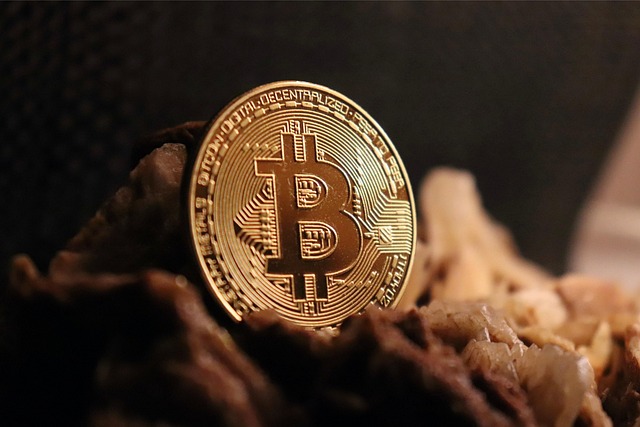SEC says it won’t re-file fraud case against Hex’s Richard Heart
The US Securities and Exchange Commission has said it doesn’t intend to refile its securities fraud complaint against Hex founder Richard Schueler, who goes by Richard Heart.“Plaintiff Securities and Exchange Commission provides this notice that it does not intend to file an amended complaint in this matter,” the regulator’s lawyer, Matthew Gulde, stated in an April 21 letter to New York District Court Judge Carol Bagley Amon. The court had previously dismissed the SEC’s original complaint on Feb. 28 as Judge Amon said the regulator failed to establish that it had jurisdiction over Heart’s activities, which she said were not specifically targeted at US investors.She granted leave for the SEC to file an amended complaint by March 20, later extending the deadline to April 21.Heart posted to X on April 22 that “Richard Heart, PulseChain, PulseX, and HEX have defeated the SEC completely and have achieved regulatory clarity that nearly no other coins have.”Letter from the SEC to Judge Amon. Source: PACERHeart added that the SEC walked away from some of its other cryptocurrency cases voluntarily, but claimed his was the only case where “the SEC lost and crypto won across the board, with a dismissal in court of every single claim the SEC brought.”Heart said it was a victory for open-source software, cryptocurrency and free speech because the SEC “actually sued software code itself in this case.” SEC hunted Heart in FinlandThe SEC sued Heart in July 2023 for alleged unregistered securities offerings of three tokens, HEX, PulseChain (PLS), and PulseX (PSLX), claiming he made more than $1 billion by touting the tokens as a “pathway to grandiose wealth for investors.”In April 2024, Heart tried to have the suit tossed, claiming the regulator “has no sway over him,” because he didn’t reside in the United States. Related: Finnish police seize watches worth $2.6M from Hex founder Richard Heart: ReportThe SEC opposed this in August, claiming he touted the tokens at a Las Vegas event. In December 2024, Interpol issued a Red Notice for Heart, seeking his arrest in Finland, where he was also suspected of tax evasion. The PulseChain native token (HEX) hit an all-time high of $0.031 in December 2024 but has since tanked 76% as most altcoins have failed to follow Bitcoin’s momentum this year. The SEC has dropped or suspended several cases against crypto firms so far this year under the Trump administration.Magazine: Altcoin season to hit in Q2? Mantra’s plan to win trust: Hodler’s Digest
Bitcoin price prepares for ‘70% to 80%’ gain as onchain metrics and spot BTC ETF inflows spike
Bitcoin (BTC) price has been in a persistent downtrend since January, but the April 22 surge past $91,000 marks its first higher high breakout of the year and the potential start of a new longer-term uptrend.Bitcoin 1-day chart. Source: Cointelegraph/TradingViewThe higher high pattern occurred after BTC moved above its previous lower high and resistance at $88,500, but the real factor that will keep price afloat is buying volumes in various cohorts of the Bitcoin market.The US spot Bitcoin ETFs recorded total net inflows of $381 million on April 21, levels not seen since Jan. 30.Spot Bitcoin ETF flows. Source: SoSoValueRising spot BTC inflows, along with Bitcoin’s increase in price, point to a possible resurgence in institutional demand for Bitcoin, and the change in trend from the ETFs could offset the selling pressure that has put a cap on BTC price for months.However, retail investor demand (buy volumes between $0 and 10,000) remained below 0%, which suggested that low volume buyers are not back yet. Over the past year, these investors have lagged behind BTC price breakouts, but they strengthen price momentum once the investor volume turns positive.Bitcoin retail investor demand by 30-day change. Source: CryptoQuantCryptoQuant community manager Maartunn highlighted that the present rally is leverage-driven rather than spot volume-driven. Glassnode data also pointed out that Bitcoin futures open interest (OI) increased by $2.4 billion in less than 36 hours.For Bitcoin price to sustain a strong position above $90,000, the current discrepancy between futures traders and retail traders needs to decrease.Related: Bitcoin-to-gold ratio risks 35% decline following Wall Street’s $13T wipeoutBitcoin could gain “70% to 80% from here”From a longer-term perspective, DYOR crypto founder Hitesh Malviya said BTC could gain 70% to 80% if it maintains a MVRV ratio of 2 for the next six weeks.The Market Value to Realized Value (MVRV) ratio, a key onchain metric, compares Bitcoin’s market cap to its realized cap—the value of coins at their last transaction price. Historically, an MVRV above 3.7 often signals overvaluation and market tops, while values near 2 have preceded strong price rallies.Bitcoin MVRV ratio. Source: CryptoQuantBitcoin’s MVRV score remained above 2 from October 2024 to February 2025, coinciding with its all-time high. Recently, the metric fell below 2 during the market correction, but it is now attempting to reclaim this key level.Related: Bitcoin traders turn to $93K yearly open as BTC price hits 6-week highThis article does not contain investment advice or recommendations. Every investment and trading move involves risk, and readers should conduct their own research when making a decision.
Crocodilus malware explained: how it targets android crypto wallets
What is Crocodilus malware? Crocodilus is the latest in a string of Android crypto malware built to steal your cryptoassets.Crocodilus is a sophisticated piece of malware that steals digital assets from Android devices. Named after crocodile references scattered throughout its code, Crocodilus targets Android 13 devices or later. The Android wallet malware utilizes overlays, remote access and social engineering to take over your device and drain your crypto wallet. Fraud prevention firm Threat Fabric discovered Crocodilus malware in March 2025 and published detailed research on the new virus. As of April 2025, users in Spain and Turkey are the primary targets. Threat Fabric predicts Crocodilus will expand globally in the coming months. How Crocodilus infects Android devices Crocodilus’ primary method of infection is still unknown, but it likely follows a path similar to other malware.What sets Crocodilus apart from typical crypto wallet malware is how deeply it integrates with your device. It does more than just trick you via social engineering. It takes complete control of your Android.While the leading cause of infection is unknown, malware like this often appears in a few ways:Fake apps: Crocodilus may disguise itself as a legitimate cryptocurrency-related app on the Google Play Store or on third-party app-hosting sites. Threat Fabric says the malware can bypass the Google Play Store’s safety scanners.SMS promotions: SMS scams are increasingly common. If you receive a random text with a suspicious link, don’t click on it. It may redirect you to a page that downloads malware.Malicious advertising: Infected ads run rampant on adult or software piracy websites. Each ad is strategically placed to make you accidentally tap, and it only takes one tap to download malware. Phishing attempts: Some malware campaigns send malicious phishing emails that impersonate cryptocurrency exchanges. Double-check the sender’s e-mail address to verify its legitimacy.Once Crocodilus infects your device, the malware will request accessibility service permissions. Accepting these permissions connects Crocodilus to its command-and-control (C2) server, where attackers can display screen overlays, track keystrokes or activate remote access to control your device.However, the malware’s main identifying trait is its wallet backup trick. If you log into your cryptocurrency wallet app using a password or PIN, Crocodilus displays a fake overlay. It reads: “Back up your wallet key in the settings within 12 hours. Otherwise, the app will be reset, and you may lose access to your wallet.” If you click “continue,” Crocodilus prompts you to type in your seed phrase. The malware tracks your inputs via its keylogger. Then, the attackers have everything they need to steal your assets.Crocodilus’ fake overlay imitates legitimate wallet software. Its “continue” button is easy to press without thinking, but know that a recognizable wallet app would never urge you to back up your wallet in this way. If you see this overlay, uninstall the app and consider a clean install of your device.Unfortunately, keylogging is just the start. Crocodilus circumvents two-factor authentication (2FA) processes via its screen recorder, capturing verification codes from apps like Google Authenticator and sending them to C2. Worst of all, Crocodilus displays a black overlay and mutes your device’s audio to cover up its activities. It pretends your phone is locked while silently stealing your assets in the background. The malware can conduct 45 commands in total, including:SMS takeover: Crocodilus can retrieve your text messages, text your contacts list, and even make itself your default SMS app.Remote access: The malware takes complete control of your device, allowing it to open apps, activate your camera or start your screen recorder.Modify text: While Crocodilus tricks you into inputting your wallet information, it can alter or generate text to help C2 access your private apps using data it finds on your device.Did you know? Stealthy malware threats to crypto wallets are common. Zero-click attacks — malware that infects your device without any input from you — are another form of crypto malware in 2025. What if you’ve fallen victim to a Crocodilus attack? Falling victim to Crocodilus requires immediate action.If you’ve fallen victim to the Android Trojan Crocodilus, immediately follow these crypto wallet protection tips:Isolate your device: Disconnect your device from Wi-Fi or data and turn it off. Remove the battery if possible.Recover your assets: You should have your wallet’s seed phrase stored in a safe, physical location. Use it to recover your wallet to an uncompromised device.Get rid of your infected device: Unfortunately, using your infected device is a massive risk. Factory resetting it might not get rid of the malware. Moving to another device is your safest option.Report the threat: If you downloaded a malicious app, such as one from the Google Play Store, report it to the relevant parties.Did you know? If you lose your cryptoassets, there’s no getting them back. Some may consider this one of the downsides to decentralization — a lack of a central authority to monitor and insure theft. How to check for a Crocodilus attack Regular checks go a long way toward protecting your cryptocurrencies. Learn how to detect crypto malware.While Crocodilus manipulates your device in secret, there are some telltale signs of infection to watch out for. Here’s how to protect crypto on Android if you’re suspicious of a Crocodilus attack:Suspicious app activity: Check your device activity tracker. An unaccounted-for uptick in cryptocurrency or banking apps may be cause for concern.Check app permissions: Regularly review the app permissions you’ve allowed, especially those that request accessibility permissions. Increased battery drain: A small but significant sign of infection is increased battery drain. If your battery drains faster than usual, your phone may be running malware in the background. Data usage spikes: Crocodilus continually transmits data to its C2 server. Monitor your data usage and be aware of any sudden increases. This is one of the most apparent signs your wallet app is compromised. How to prevent a Crocodilus hack Prevention is the best form of protection.According to blockchain analysis firm Chainalysis, an estimated $51 billion in cryptocurrencies was stolen via crypto hacks in 2024. The group expects this number to increase in 2025 and beyond. Cybersecurity is more important than ever as we continue to move toward decentralized digital finance.While it’s impossible to remain 100% safe from cyberthreats, consider adopting the following behaviors to protect yourself. Crypto wallet security in 2025 is more important than ever:Browse safely: Avoid suspicious websites that exist to trap users into downloading Crocodilus and other malware stealing crypto keys.Use a hardware wallet: As of April 2025, Crocodilus targets Android devices, specifically. Keeping your cryptocurrencies in a hardware wallet limits the malware’s reach. Triple-check app downloads: Don’t side-load applications from unsafe websites. Make sure to triple-check apps on the Google Play Store and only download those you’re sure are official.Check official sources: Follow reputable cybersecurity websites, subreddits and other spaces to stay current on Crocodilus protection methods.Finally, be wary of unexpected backup prompts and monitor app behavior for suspicious activity.
Crypto firms moving into Wall Street territory amid ‘growing synergy’
Cryptocurrency firms and exchanges are increasingly moving into Wall Street territory, launching more traditional investment offerings and showcasing the increasing connection between crypto and traditional finance (TradFi).“There’s a growing synergy between traditional financial investments and the emerging crypto space,” according to Gracy Chen, the CEO of Bitget, the world’s sixth-largest crypto exchange.“Crypto players are now checking out traditional finance as they see the opportunity to bridge it,” Chen told Cointelegraph.“The lines are blurring — investors want flexibility, and products that can straddle both worlds are naturally attractive,” Chen said. “Some players see TradFi as a safety net; others, like Bitget, see it as a launchpad for broader adoption.” She added:“In a volatile market, integration is smarter than isolation.”Related: Trump’s tariff escalation exposes ‘deeper fractures’ in global financial systemChen’s comments come a week after crypto exchange Kraken launched access to 11,000 US-listed stocks and exchange-traded funds (ETFs) as the first part of a global expansion into TradFi offerings, Cointelegraph reported on April 14.Kraken’s expansion into traditional stock offerings was announced a week after the S&P 500’s record-breaking two-day loss of over $5 trillion, triggered by US President Donald Trump’s reciprocal import tariffs announcement on April 2.Coinbase CEO Brian Armstrong echoed a similar vision. During the company’s latest earnings call, Armstrong said Coinbase aims to help modernize the global financial system and bring more of the world’s GDP onto crypto rails.“We think that’s a more efficient, fair, free world that will accelerate progress, and it creates economic freedom,” he said during Coinbase’s latest earnings call.Related: 70% chance of crypto bottoming before June amid trade fears: NansenCrypto and TradFi relationship is “inherently symbiotic” The relationship between “digital assets and more traditional assets is inherently symbiotic,” a spokesperson for Coinbase, the world’s third-largest crypto exchange, told Cointelegraph, adding:“Core to our mission to enable economic freedom by onboarding one billion users to crypto, is supporting more of ‘traditional finance’ to be integrated with crypto.”“As regulatory clarity and institutional adoption increase globally, we expect more of the global GDP to be running on crypto rails,” the spokesperson added.Related: Bitcoin rally above $100K may follow US Treasury buybacks — Arthur HayesBlockchain technology brings “speed and transparency” while TradFi introduces “trust, scale and compliance,” in an “inevitable convergence,” Omri Hanover, general manager at Gems Trade cryptocurrency platform, told Cointelegraph.“Together, TradFi and crypto unlock new pathways for both retail and institutional investors, especially those seeking exposure to digital assets without navigating the full complexity of native crypto products,” he explained.Traditional investment platforms such as eToro and Robinhood have also launched cryptocurrency offerings.Magazine: Altcoin season to hit in Q2? Mantra’s plan to win trust: Hodler’s Digest, April 13 – 19
KuCoin’s settlement with CFTC in flux after Trump policy shift
A planned settlement between the US Commodity Futures Trading Commission and crypto exchange KuCoin will likely be delayed after a policy shift at the CFTC to deprioritize cases against crypto companies under the Trump administration. CFTC attorney John Murphy submitted a letter on April 21 to District Judge Valerie Caproni, asking for more time to secure approval for a deal negotiated under the Biden administration, reported Law360.“It appears unlikely that such authorization will be granted in the near term,” he said, referencing a recent statement by acting CFTC Chair Caroline Pham that the agency’s enforcement division was to deprioritize cases against crypto companies.The CFTC charged KuCoin with “multiple violations of the Commodity Exchange Act (CEA) and CFTC regulations” in March 2024.According to the Justice Department, which also filed charges against KuCoin and two founders for violating Anti-Money Laundering laws, the exchange received more than $5 billion and sent more than $4 billion in “suspicious and criminal funds.” KuCoin, trading under Mek Global Limited, reached a $297 million settlement with the Department of Justice in January and agreed to exit the US market for at least two years. In December, the CFTC and KuCoin informed the court that they reached an agreement in principle to settle the case, however terms and details of the proposed deal were not disclosed. In March, KuCoin asked the judge for a 14-day stay to address further negotiations in line with President Trump’s executive order curtailing enforcement actions against the digital asset industry. However, this request was denied, with the judge pressing for negotiation status updates. No majority at CFTCWhen Pham announced in February that the Commission would wind down its practice of regulation by enforcement, she also noted that terminating active cases would be more difficult to deal with.The CFTC needs a majority to dismiss a case or authorize its settlement, and there is currently no majority, with two members from each party sitting on its governing body.This could change if the Senate confirms the appointment of Trump nominee Brian Quintenz to lead the financial regulator.Both parties have requested an additional 60 days or until the Commission provides “definitive direction” on the matter. Related: US regulators FDIC and CFTC ease crypto restrictions for banks, derivativesOn April 21, the CFTC’s Divisions of Market Oversight issued a request for comment to better inform them on the potential uses, benefits, and risks of perpetual contracts in derivatives markets.“Innovation and new technology have created a renaissance in markets that presents new opportunities that are accessible to more people, as well as risks,” said Pham. Magazine: Altcoin season to hit in Q2? Mantra’s plan to win trust: Hodler’s Digest
Bitcoin risks '10-15%' BTC price dip after key rejection near $89K
Bitcoin (BTC) traders see a BTC price reversal already beginning as classic resistance stops bulls in their tracks.BTC/USD 1-hour chart. Source: Cointelegraph/TradingView200-day moving average keeps BTC price pinnedData from Cointelegraph Markets Pro and TradingView shows BTC/USD cooling after hitting new April highs of $88,874.Having found strength at the start of the week, Bitcoin raised hopes of a gold copycat move as the latter set multiple all-time highs.Those highs continued on April 22, while BTC price action conversely saw rejection at the key 200-day simple moving average (SMA).“Interesting spot. Broke above the Daily 200EMA (Blue) and diagonal resistance. So far, saw a sharp rejection from the Daily 200MA (Purple),” popular trader Daan Crypto Trades summarized in a post on X alongside an explanatory chart. “Fun won’t start until we get some daily closes back above the previous range low at ~$90K. Important to hold ~$85K below I’d say.”BTC/USD 1-day chart. Source: Daan Crypto Trades/XThe 200-day SMA traditionally forms support during Bitcoin bull markets but was lost in March as crypto faced sell-side pressure when the US trade war began.Since then, BTC/USD has seen five-month lows under $75,000, and despite a healthy rebound, some market participants are keen to call time on the latest episode of price upside.Among them is fellow trader Roman, who referenced stochastic relative strength index (RSI) values in “overbought” territory.“As we approach horizontal resistance, I wanted to show that the last 4 times stoch RSI has been overbought, we’ve seen a 10-15% correction,” he noted, adding that such a move “would make perfect sense” given downward momentum on the S&P 500.Daily stochastic RSI was at the top of its 0-100 scale on April 22.BTC/USD 1-day chart with 200 SMA, stoch RSI data. Source: Cointelegraph/TradingViewBitcoin “reversal has started,” says traderAs Cointelegraph continues to report, other bullish market commentary focuses on the confluence of macroeconomic factors that traditionally fuel BTC price gains.Related: US dollar goes ‘no-bid’ — 5 things to know in Bitcoin this weekThese include rapidly weakening US dollar strength, all-time highs in the global M2 money supply, and a delayed reaction to gold’s breakout.“In the past few weeks, I’m looking at different on-chain data and global events which makes me believe that BTC reversal has started,” popular trader Cas Abbe concluded in a dedicated X thread on the topic.Abbe rejected the idea that the current BTC rebound will end up as a “bull trap,” pointing to whale accumulation and the reemerging Coinbase premium in addition to macroeconomic factors.“I believe that $74K-$75K zone was the bottom for $BTC. Most alts have also bottomed out and we could see a sustained rally,” he added.BTC/USD vs. XAU/USD chart. Source: Cas Abbe/XThis article does not contain investment advice or recommendations. Every investment and trading move involves risk, and readers should conduct their own research when making a decision.
WazirX confirms restart on track as it awaits sanction hearing in May
Indian crypto exchange WazirX, which was hacked for $234 million last July, says it is on track to restart its operations pending a May 13 court decision on its restructuring proposal and user compensation plan. If Singapore’s High Court gives the nod, WazirX parent company Zettai PTE Ltd can restart the exchange and begin its compensation scheme for affected users within 10 business days, WazirX said in an April 21 update to X.WazirX lost $234 million of crypto from a Safe Multisig wallet mid-July 2024 in an attack since attributed to North Korean hackers, forcing them to temporarily pause all crypto and Indian rupee withdrawals on the platform.Source: WazirX“Zettai has completed all prior required steps, and the next key step is the sanction hearing, which the Singapore High Court has scheduled for May 13, 2025,” the firm said.“This hearing is essential for the Scheme to become legally effective. While we’ve worked to stay aligned with the previously shared timelines, court proceedings operate independently, and we respect that process.”On April 7, more than 90% of the voting creditors voted in favor of the platform’s post-hack restructuring plan, which involved the issuance of recovery tokens.The tokens would be repurchased using net profits from the exchange and could yield 75% to 80% of users’ account balances at the time of the cyberattack.WazirX had warned that repayments from the $235 million hack could be delayed until 2030 if creditors didn’t approve its proposed restructuring plan. Singapore’s High Court gave Zettai permission to convene a creditors’ meeting to propose a possible remedy for users and a plan to get the exchange back online in January.Related: Bybit CEO: Two-thirds of Lazarus-hacked funds remain traceable“We understand the eagerness around the platform restart and truly appreciate your continued patience,” WazirX said.”Since the beginning, we have communicated that the first distribution and restart would occur within the April-May 2025 window.”Supreme Court of India dismisses WazirX users petition A separate April 16 court judgment from the Supreme Court of India dismissed a petition filed by 54 victims of the hack, who sought legal action against WazirX, Shetty, Binance and custody provider Liminal. Petitioners also asked the court to audit WazirX’s accounts. Justices B.R. Gavai and Augustine Masih rejected the petition, saying the court could not rule on the case because it was a matter of crypto policy, which the court doesn’t have the authority to rule on. Gavai and Masih advised the petitioners to approach a regulatory body or other relevant authority to hear the matter instead.Magazine: Uni students crypto ‘grooming’ scandal, 67K scammed by fake women: Asia Express
Bitget’s $12B VOXEL frenzy fizzled fast, but questions remain
A little-known VOXEL trading pair on cryptocurrency exchange Bitget suddenly clocked over $12 billion in volume on April 20, dwarfing the metrics of the same contract on Binance.The activity centered on VOXEL/USDT perpetual futures, where traders reported instant order fills — an anomaly many described as a bug that allowed savvy traders to rack up outsized profits by exploiting unusual price behavior.The atypical metrics drew Bitget’s attention. In the fallout of its early investigation, the exchange suspended accounts suspected of market manipulation and rolled back irregular trades that occurred throughout the day. Traders who copped losses during that period were offered compensation.Bitget’s response and remediation plan may have prevented lasting investor damage, but the episode is the latest in a series of cases that raise questions about how exchanges handle market makers, internal systems and user safeguards. While Bitget promotes an open API and regularly touts its global market maker program, it has yet to disclose who was behind the April 20 activity or what technical factors led to it.The lack of incident-level detail has fueled speculations comparable to similar breakdowns on Binance — the world’s largest exchange by trading volume — that included the sudden price crashes of cryptocurrencies GoPlus (GPS) and MyShell (SHELL) in March. Binance kicked out an unnamed market maker it found responsible for manipulation, but the lack of disclosure added fuel to the crypto industry’s infamous rumor mongering.Bitget’s VOXEL/USDT perpetual futures volume exceeded that of all other top 10 markets combined on April 20. Source: Thành CryptoTraders VOXEL market maker bug, Bitget disagreesCrypto market participants pointed to rapid price fluctuations and what multiple Mandarin-language X accounts described as a bug in a “market maker” bot as the cause of VOXEL’s excessive volume.Traders claimed that VOXEL’s price flickered between several ranges, such as $0.125 and $0.138. Orders placed between those bands filled instantly due to the suspected bug, X user Dylan said, sharing screenshots and videos of profitable accounts. Perpetual futures contracts are typically matched through an order book, with each trade requiring a counterparty. But in this case, trades appeared to execute automatically and without delay.A machine-translated post shares how one trader profits hundreds of thousands of dollars with just $100 USDT in starting capital. Source: 0xDy_ethTraders who spotted the suspected bug early used high-leverage bets to boost their profits, X user Qingshui said, calling the strategy a “zero-cost exploit.” Like Dylan, Qingshui attributed the issue to a market maker bot misfiring and questioned why traders were blocked from accessing profits if the problem originated from Bitget’s side.Related: How Mantra’s OM token collapsed in 24 hours of chaosA third user, Hebi555, pointed the finger at Bitget’s market-making team for its poor performance. Xie Jiayin, Bitget’s head of Asia, clapped back, stating that the exchange works with over 1,000 market makers and institutional clients. He added that Bitget’s API is open to the public and emphasized that specific market maker identities could not be disclosed due to confidentiality agreements.In an April 20 response to Cointelegraph, Bitget CEO Gracy Chen said that suspicious trades were between individual market participants, not the platform. Replying to Cointelegraph’s follow-up inquiry on April 21, Chen neither confirmed nor denied whether a market maker bot was involved, only reiterating that the trading was “between users.”“We are conducting a thorough review, and once the rollback is completed, trading and account restrictions will be lifted as appropriate. Bitget’s security infrastructure is designed to catch irregularities like this in real time — as it did in this case,” Chen said.Bitget’s VOXEL anomaly adds to crypto’s market manipulation mysteryConcerns over market manipulation in the cryptocurrency industry have been intensifying. In early March, the prices of two tokens, GPS and SHELL, crashed in tandem with their Binance listings. The exchange’s investigation found that the two tokens employed the same unnamed market maker. Binance banished the dubious trading firm from its platform and confiscated its proceeds to help fund compensation efforts for GPS and SHELL traders. Without a suspect to blame, social media users began pointing fingers at several market makers and trading firms. Those named denied any involvement.GSR was among the most frequently accused firms, but denied being the market maker removed by Binance. Source: GSRBinance then kicked out another unnamed market maker, this time for trading activities related to the Movement (MOVE) token. The MOVE token’s market maker on Binance was found to have associations with the market maker for GPS and SHELL.Related: Market maker deals are quietly killing crypto projectsA recent Cointelegraph report found that market makers are employing a loan-based model that is killing off small- and medium-cap projects. The loan model gives market makers access to a project’s tokens in exchange for liquidity provision. But instead, what often happens is that market makers dump the loaned tokens on the open market just to buy them back at a cheaper price, leaving the projects with damaged price charts.VOXEL was on Bitget, but exploits aren’t limited to CEXsBoth Bitget and Binance’s cases show that even the largest centralized exchanges (CEXs) aren’t immune to market manipulation or traders exploiting platforms for profits.But a recent case on decentralized exchange (DEX) Hyperliquid shows the issue isn’t confined to CEXs. In late March, a whale allegedly exploited the liquidation parameters on Hyperliquid, resulting in the delisting of the platform’s JELLY perpetual futures product. Hyperliquid then announced a compensation plan for affected users, similar to how Bitget responded to its own VOXEL drama.X user spotlights double standards in how exchanges respond to bugs. Source: Dotyyds1234Ironically, Bitget’s Chen had some strong words against Hyperliquid at the time, raising concerns about the network’s centralization. She compared the DEX to FTX, once a billion-dollar trading firm whose founder is now serving a 25-year prison sentence for multiple counts of fraud.“The way it handled the JELLY incident was immature, unethical, and unprofessional, triggering user losses and casting serious doubts over its integrity. Despite presenting itself as an innovative decentralized exchange with a bold vision, Hyperliquid operates more like an offshore CEX with no [Know-Your-Customer/Anti-Money Laundering], enabling illicit flows and bad actors,” she said.Bitget’s VOXEL episode may have been contained, and Hyperliquid’s users may be compensated, but the broader pattern is harder to ignore for traders. As platforms scramble to maintain trust, the industry’s vulnerability isn’t just the bugs or exploits, but the silence that follows them.Magazine: Uni students crypto ‘grooming’ scandal, 67K scammed by fake women: Asia Express
Gold-backed vs USD-backed stablecoins: Key differences
What are gold-backed stablecoins, and how do they work? Gold-backed stablecoins are digital currencies pegged to physical gold reserves and designed to maintain a stable value. The concept of gold-backed digital currencies dates back to the early days of cryptocurrency, with developers aiming to create a reliable store of value. Each gold-backed stablecoin represents a specific quantity of gold. For instance, one token might be linked to 1 troy ounce of gold. A troy ounce is a unit of weight used explicitly for weighing precious metals like gold, silver and platinum; it is equal to 31.1034768 grams. A third party typically holds the gold reserves to ensure security and transparency. The issuing entity is responsible for maintaining an equivalent amount of physical gold for every token in circulation. The token’s price remains closely aligned with the market value of gold. Buyers pay gold’s spot price for a token. Similarly, if the stablecoin fails, the tokenholders can redeem their tokens for the gold. Practically, the gold is liquidated for electronic fiat transfers.Regulators classify gold-backed stablecoins as commodity-backed stablecoins or asset-referenced tokens (ARTs), depending on jurisdiction. Examples of gold-backed stablecoins include Tether Gold (XAUT), Paxos Gold (PAXG) and Alloy (aUSDT).Did you know? On April 1, 2025, Tether Gold (XAUT) traded at $3,165. Its market capitalization was about $780.3 million, with a daily trading volume of $11.03 million. Advantages of gold-backed stablecoins Gold-backed stablecoins combine the stability of gold with the flexibility of digital assets. Their blockchain-based nature offers benefits beyond traditional paper gold. Here are a few advantages of gold-backed stablecoins:Flexible alternative to physical gold: Gold-backed stablecoins function as blockchain-based representations of gold, offering a more efficient and flexible alternative to holding physical bullion. Instant global trading: Unlike traditional gold ownership, these tokens can be stored in cryptocurrency wallets from which you can transfer instantly and trade globally with a nominal transactional fee.Access to DeFi applications: They also enable decentralized finance (DeFi) applications, expanding their usability beyond traditional gold investments.Better security: Physical gold is vulnerable to theft, loss and damage. Gold-backed stablecoins, stored on blockchain networks, can be more secure.Programmability: Gold-backed stablecoins are programmable because they exist on blockchain networks such as Ethereum. This allows them to interact with smart contracts and work with decentralized apps (DApps).Divisibility: Splitting physical gold or even paper gold is challenging. However, you can split a single token into several decimal places, which can be recorded on the blockchain.Make gold more accessible: Gold-backed tokens enable you to easily access gold. An ounce of gold may be expensive, but you can easily buy 0.001 of a token. Interoperability: When you release a token on a widely used network like Ethereum, it is instantly operable with DApps, DeFi platforms and wallets supported by the network.Diversification of funds: Investing in gold-backed stablecoins enables you to diversify your funds. It is a unique type of asset that protects you against currency value drops. What are USD-backed stablecoins, and how do they work? USD-backed stablecoins are cryptocurrencies designed to maintain a stable value by being pegged to the US dollar. Each token is typically backed by an equivalent amount of US dollars or cash-equivalent assets held in reserve by a financial institution or trust.For every USD-backed stablecoin issued, the issuing entity must maintain a corresponding reserve amount to guarantee its value. This ensures that holders can always redeem their tokens for an equivalent dollar amount. Examples of USD-backed stablecoins are Tether (USDt), USDC (USDC) and Binance USD (BUSD), all of which are used in trading, payments and DeFi.You can buy and sell stablecoins through crypto exchanges like Binance or Coinbase. To purchase, create an account, complete verification, deposit fiat or crypto and choose a stablecoin such as USDt or USDC. To sell, go to the trading section, select your stablecoin, and exchange it for fiat or another crypto. Some wallets and peer-to-peer (P2P) exchanges also support stablecoin trading.Did you know? The EU’s Markets in Crypto-Assets Regulations (MiCA) have forced crypto exchanges to delist USDT and other non-compliant stablecoins, resulting in a growing market for Euro-backed stablecoins. USDC continues to be a prominent USD alternative in the region. Advantages of USD-backed stablecoins USD-backed stablecoins offer several advantages, making them a critical part of the crypto ecosystem. By combining the reliability of fiat currency with the efficiency of blockchain, USD-backed stablecoins play a vital role in digital finance. Here are a few advantages of USD-backed stablecoins:Steady value: Unlike traditional cryptocurrencies, which experience high volatility, stablecoins maintain a steady value, making them an ideal unit for payments, particularly in exchange for goods and services.Liquidity and accessibility: USD-backed stablecoins are widely accepted across crypto exchanges, payment platforms and DeFi applications. This allows traders to move funds quickly between assets without converting crypto back to fiat currency, reducing transaction costs and delays.Transparency: Issuers generally provide regular audits and reports on their reserves, which enables users to verify that actual USD holdings back each token. This transparency builds trust among users, issuers and regulators.Fast, low-cost international payments: Operating on blockchain networks, USD-backed blockchain networks facilitate fast, low-cost international payments without relying on traditional banking systems. This makes them a preferred option for remittances and cross-border trade.Safe haven during market downturns: USD-backed stablecoins offer stability during periods of market volatility. Investors and traders often convert volatile crypto holdings into stablecoins to protect their value without exiting the crypto market entirely.Still, please note that stablecoins may depeg occasionally because of several macro and microeconomic factors. Macro factors include changes in economic conditions, such as inflation or an increase in interest rates. Micro variables involve differences in market conditions, such as changes in the underlying collateral and problems with liquidity. When Silicon Valley Bank failed in March of 2023, the USDC stablecoin deviated from its peg because $3.3 billion of its reserves were held there.Did you know? Stablecoins are of four types: fiat-collateralized, crypto-collateralized, algorithmic and commodity-collateralized. Algorithmic stablecoins have gradually gone out of favor. Key differences between gold-backed and USD-backed stablecoins Gold-backed and USD-backed tokens are stablecoins, yet they differ in several ways. This comparison explores the fundamental differences, focusing on their backing assets, price stability, liquidity, adoption and primary use cases:Backing asset: Physical gold vs fiat reservesGold-backed and USD-backed stablecoins differ primarily regarding the collateral that supports their value. Gold-backed stablecoins are tied to physical gold, usually at a fixed ratio, while some USD-backed stablecoins are backed by a reserve of US dollars, short-dated and cash deposits.Price stability: Long-term vs short-termThe value of gold-backed stablecoins fluctuates depending on the market price of gold, which can experience short-term volatility but tends to appreciate over the long run. USD-backed stablecoins maintain a 1:1 peg to the dollar, ensuring more predictable short-term stability. Their value remains steady unless external factors, such as regulatory changes or mismanagement of reserves, impact the peg. Liquidity and adoption: Use of USD-backed in DeFi applicationsUSD-backed stablecoins are more liquid and widely accepted in the crypto ecosystem, including exchanges, payment systems and DeFi applications. They are frequently used for trading and lending. Moreover, many countries in Latin America, such as Bolivia, have adopted USDC for payments. Gold-backed stablecoins, while useful for preserving value, are less commonly integrated into DeFi protocols due to low liquidity concerns. Use cases: Value storage Gold-backed stablecoins serve as a hedge against inflation, appealing to investors seeking growth. USD-backed stablecoins are preferred by investors seeking stability and value storage. USD-backed stablecoins are used for everyday transactions, trading and financial services, thanks to instant liquidity and ease of use.Regulatory considerations: ComplianceGold-backed stablecoins and fiat-backed stablecoins differ in regulation due to their underlying assets. For instance, specific regulations such as the Guiding and Establishing National Innovation for US Stablecoins Act (GENIUS Act) and the Stablecoin Transparency and Accountability for a Better Ledger Economy (STABLE) Act have emerged in the US for USD-backed stablecoins. However, no specific regulations exist for gold-backed stablecoins as of March 31, 2025, though they are expected to adhere to the usual banking and financial regulations. Can gold-backed stablecoins surpass USD-backed coins in adoption? Two factors favoring gold-backed stablecoins are their inflation-resistant properties and long-term stability. As Bitcoin advocate Max Keiser points out, gold enjoys greater global trust than the US dollar, particularly among nations with strained relations with the US. But is this enough for gold-backed stablecoins to get ahead of its more celebrated competitor?USD-backed stablecoins, often under scrutiny in the days of the Biden administration, are now enjoying the support of the US government headed by President Donald Trump. The current dispensation views USD-backed stablecoins as a potent tool to maintain the status of the US dollar as the world’s reserve currency. While the Trump administration has been crypto-friendly since it took over, its support of the GENIUS Act and the STABLE Act, which await Congressional approval, is further testimony of this approach.Treasury Secretary Scott Bessent has emphasized stablecoins as a strategic tool for sustaining the dollar’s reserve currency status. Federal Reserve Governor Christopher Waller has echoed this sentiment, supporting stablecoins as a means to uphold US dollar hegemony.Still, countries including Russia, China and Iran, arch-rivals of the US, might prefer gold-backed stablecoins over USD-backed stablecoins because the bullion-powered coins may help them limit the influence of the US dollar. According to Keiser, China and Russia collectively hold around 50,000 tons of gold, more than officially reported. If true, this gold could be used to roll out gold-backed stablecoins.If gold-backed stablecoins gain wider adoption, they could challenge the US government’s efforts to maintain dollar dominance through stablecoins. To that end, stablecoin issuer Tether introduced Alloy (aUSDT) in June 2024, a gold-backed digital asset tied to Tether Gold (XAUT), a token representing claims on physical gold. Gold-backed stablecoins resemble the gold-backed US dollar before 1971. That was the year when President Richard Nixon abolished the convertibility of the US dollar to gold. XAUT has enjoyed a 15.7% price increase year-to-date, suggesting the growth potential of the bullion-backed stablecoins.While gold-backed stablecoins present a compelling alternative, the battle for dominance between gold and USD-pegged stablecoins remains ongoing, influenced by geopolitical factors, financial policies, and market demand.
Circle, BitGo about to apply for bank charter, others may follow: WSJ
Major cryptocurrency firms, including stablecoin issuer Circle and crypto custodian BitGo, are reportedly considering applying for bank charters or licenses.According to an April 21 Wall Street Journal report citing people familiar with the matter, Circle, BitGo and other firms are considering applying for some form of banking license. Other firms cited include the publicly traded US-based crypto exchange Coinbase and the stablecoin issuer Paxos.Back in 2021, the US Office of the Comptroller of the Currency already granted a preliminary conditional approval for a US bank charter to Paxos. The report comes as the US continues to reshape local stablecoin regulations.US Federal Reserve Chair Jerome Powell recently said that as digital assets gain mainstream adoption, establishing a legal framework for stablecoins is a “good idea.” Speaking at a recent event in Chicago, Powell recognized that after a “wave of failures and frauds,” the crypto space delivered a consumer use case that “could have wide appeal.”Related: Stablecoins are powering deobanksA stable geniusThe US House Financial Services Committee passed a Republican-backed stablecoin framework bill earlier in April. The bill approved by the committee is the Stablecoin Transparency and Accountability for a Better Ledger Economy (STABLE) Act.This bill is moving forward alongside the Guiding and Establishing National Innovation for US Stablecoins (GENIUS) Act. The STABLE and GENIUS bills differ in how they would regulate the stablecoin industry.The latter was the first one to be introduced and made its way past the US Senate Banking Committee in mid-March. While the STABLE Act emphasizes strict federal oversight, the GENIUS Act seeks a more flexible path that includes state and federal regulation.The STABLE Act enforces a two-year moratorium on issuing collateralized stablecoins backed by self-issued digital assets. It also mandates that stablecoin reserves be held separate from business funds to ensure that customer deposits are not used for operations.The GENIUS Act establishes a legal framework for stablecoin payments and aims to support US-based stablecoin issuers to reinforce the dollar’s global dominance. The bill also includes stricter rules, such as enhanced Anti-Money Laundering (AML) safeguards, reserve and liquidity standards, and sanctions checks.Under the GENIUS Act, stablecoin issuers are considered financial institutions covered by the Bank Secrecy Act, which means they fall under strict AML rules. User verification and reporting of suspicious activity would also be required.Related: Crypto’s debanking problem persists despite new regulationsWhy a bank charter?The companies cited in the report had not responded to Cointelegraph’s inquiries by publication.However, a bank charter potentially would allow crypto firms to operate like traditional lenders, taking deposits and making loans.On the other hand, crypto firms that obtain a banking charter would be subject to much stricter reporting and regulatory oversight. One example is Anchorage Digital, a crypto firm holding a federal bank charter that reportedly spent millions to comply with regulations.Despite this, recent reports indicate that the US Department of Homeland Security’s El Dorado Task Force has reportedly launched an investigation into Anchorage Digital Bank.The news does not come as a complete surprise. In late March, reports indicated that cryptocurrency and fintech companies are increasingly seeking bank charters in an attempt to grow their businesses under the Trump administration.Magazine: Elon Musk’s plan to run government on blockchain faces uphill battle










